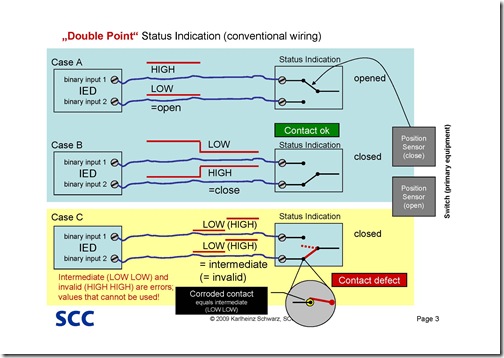Comprehensive automation systems are in use in many application domains like:
- Factories (factory automation),
- Chemical and power plants (process automation),
- Electrical transmission and distribution substations (substation automation)
- ...
Usually these domains have their own solutions - there are many reasons (often historical reasons). They even have their own standardization bodies: Factory automation: ISO TC 184, process automation: IEC TC 65, and substation automation: IEC TC 57.
From a system integration point of view this is non-productive. Very often the electrical system was understood as somehow special - may be because of the danger of dealing with high voltage!!
The above mentioned automation domains need solutions to exchange the huge amount of information for control and monitoring. In the past very often these domains used their own communication solutions. There was no consensus between the different domains to define a seamless solution that makes integration easier - to safe time and money, ...
The first approach to overcome the many proprietary solutions was the project MAP (manufacturing automation protocol) some 25 years ago. It failed - because it was simply to early. Just a few people understood the need of seamless integration. ISO TC 184 has published the system integration standard ISO 9506 (MMS) in 1990 - but it is used since the mid nineties all over in the electric power world: in IEC 60870-6-TASE.2, IEC 61850, and IEC 61400-25.
After the "fieldbus war" we still have the domain specific approaches, solutions and products. The fieldbus discussion has focused too long on the best approach of the field instrumentation - now we have tens of normative fieldbus standards! A seamless solution for system integration was developed by IEC TC 57: IEC 61850 "Communication networks and systems for power utility automation". The restricted scope on power utility automation has been chosen because IEC TC 57 has the scope electric power systems. Most experts outside the "dangerous" electrical world have not (yet) thought to use an "electrical" standard for non-electrical applications.
In fact the solution IEC 61850 can be used in almost all application domains of automation. At least for the three domains: factory automation, process automation, and substation automation. AND: All these application domains use a lot of electric power!! Electric power is one of the most crucial raw material for any application. Any plant manager has to pay more attention to the electric power system!
ABB has realized the crucial integration needs cross several application domains: “We still have separate work spaces for power people and process people, but everyone does more of their work the same way, using the same paradigm. This means more and better optimization, lower total costs and more minimization of risk.” according to Stefan Bollmeyer, ABB fieldbus product manager for its System 800xA. He says also: "Many users have their own department and kingdoms, and they want them to stay just as they are.”
"To help process control and power staffs cooperate on achieving better electrical integration, ABB recommends they adopt a unified integration method based on a single system environment, use a fieldbus network to handle electrification control and management, and use the IEC 61850 standard to tie together process instrumentation, process electrification and power distribution networks." according to a report about ABB's March 23-25, 2009 event in Orlando, Florida (USA). Read Report.
With the Ethernet, TCP/IP and XML based information exchange in most of the application domains it could be expected that IEC 61850 will be used as the standard for seamless information, information exchange and system configuration. The information model of IEC 61850 "MMXU" (electrical measurements) providing objects of three phase AC voltages (PhaseA, PhaseB, PhaseC or PhaseAB, PhaseBC, PhaseCA) or three AC currents (PhaseA, PhaseB, PhaseC) can be used where three phases are installed: in any application domain.
The same AC electrical system can be found in power plants, power transmission and distribution, and any other plant. Some companies have realized that IEC 61850 could be used as the single seamless solution in most application domains. Nobody would come up with a special 5 phase AC system for his application domain! IEC 61850 could play the same standard role as does the three phase seamless AC electrical system - even we have 50 Hz or 60 Hz systems!
IEC 61850 will be accepted some time down the road as the seamless international integration standard like the three phase AC electrical system is the international standard for electric power.







